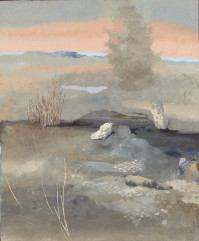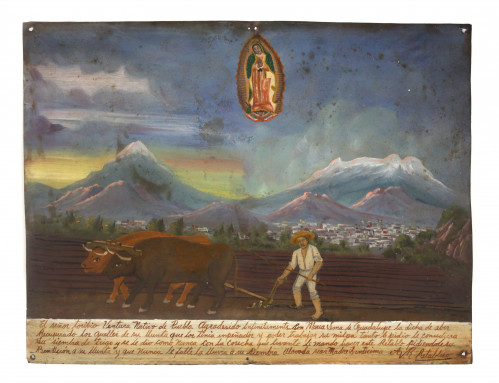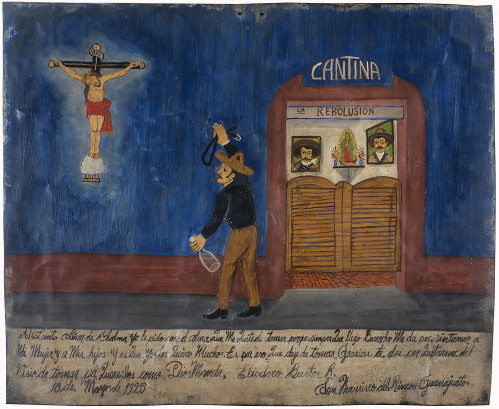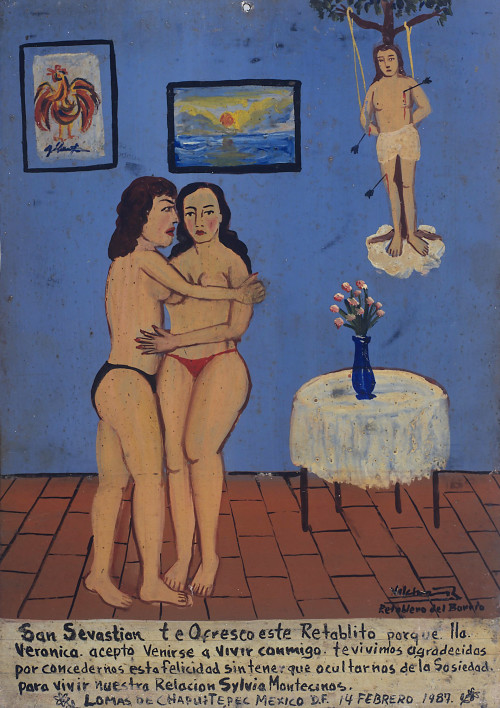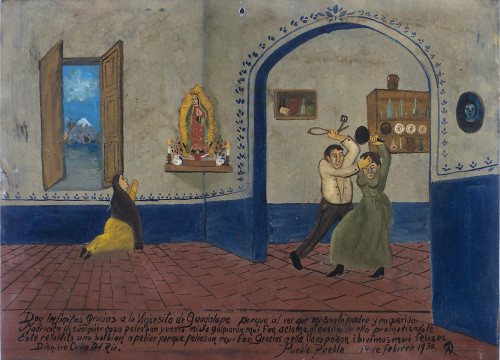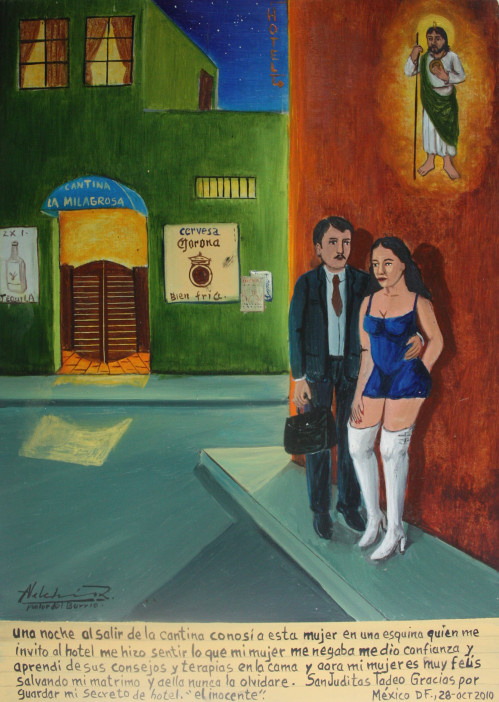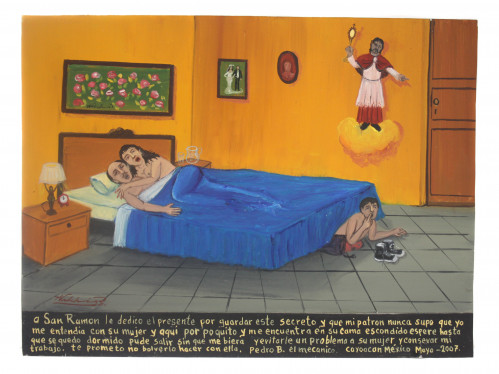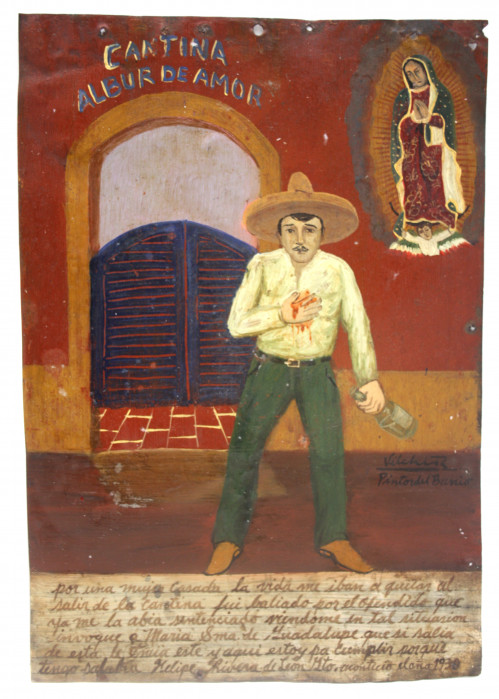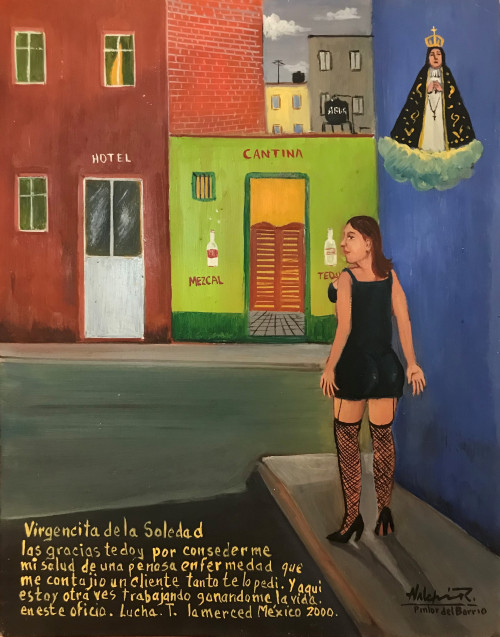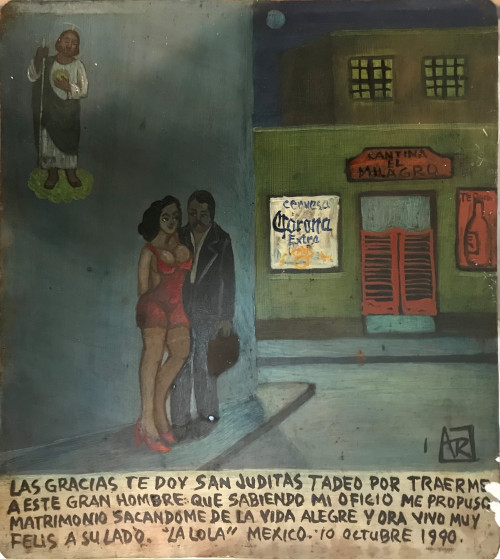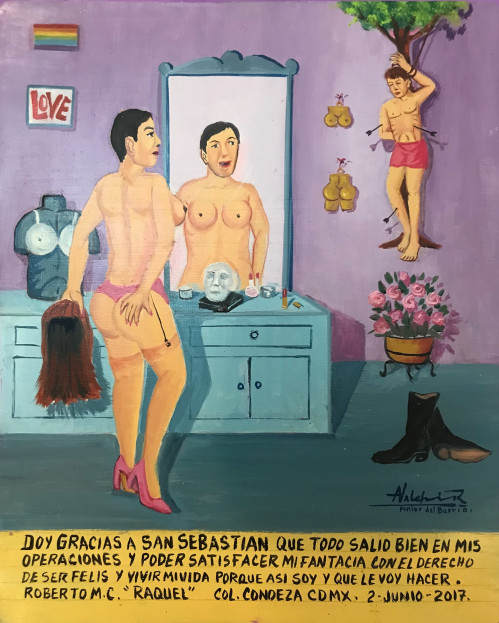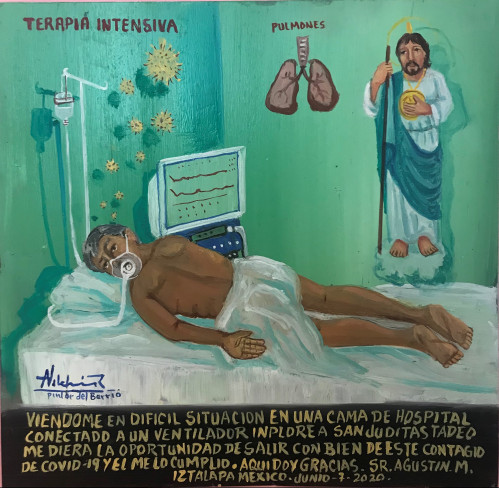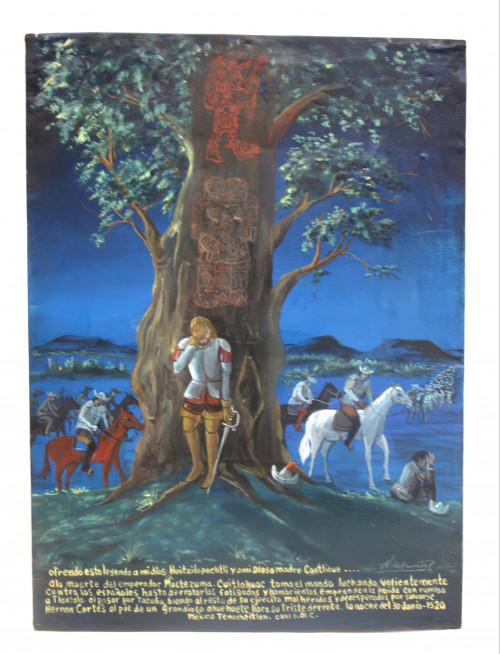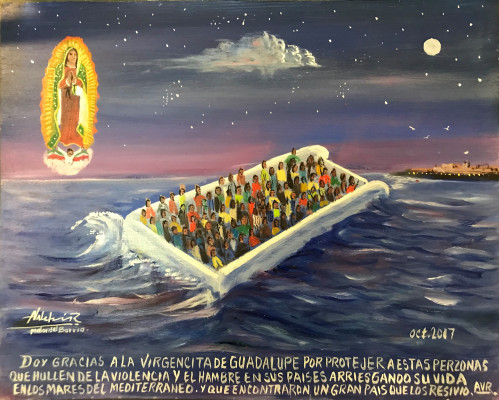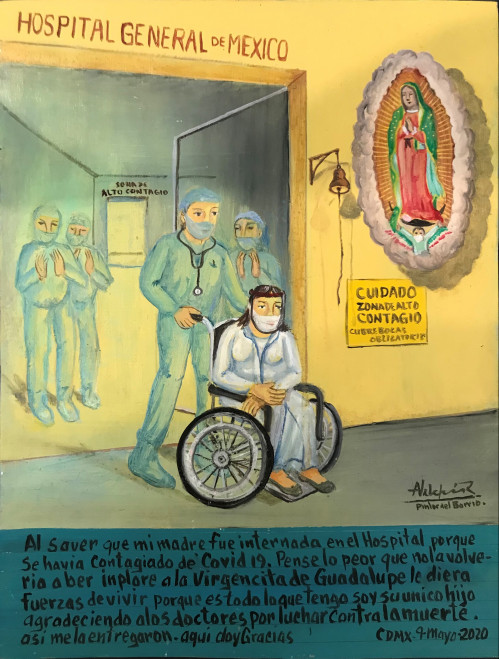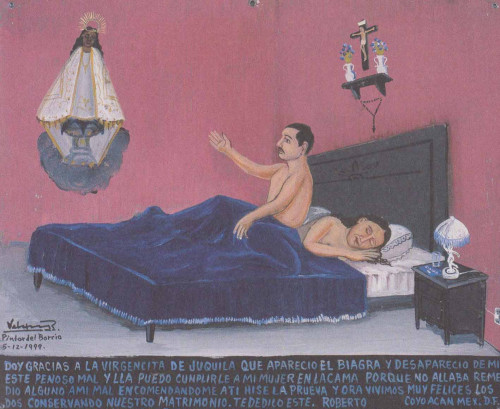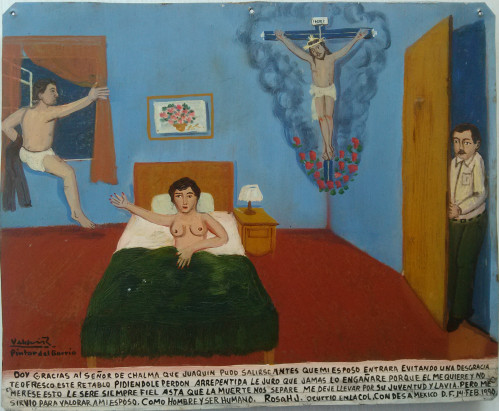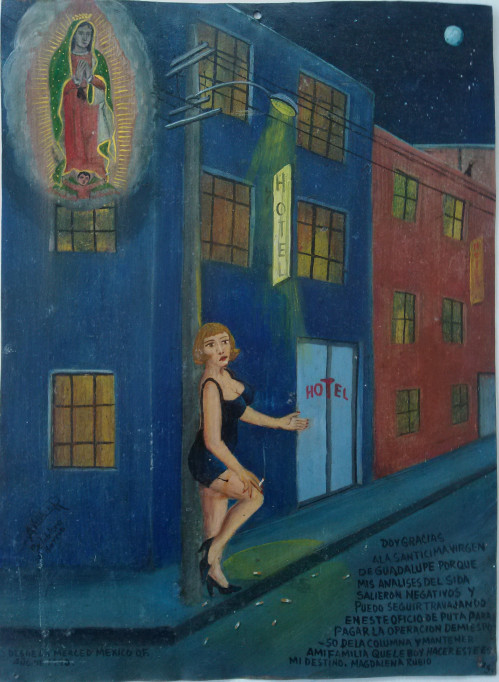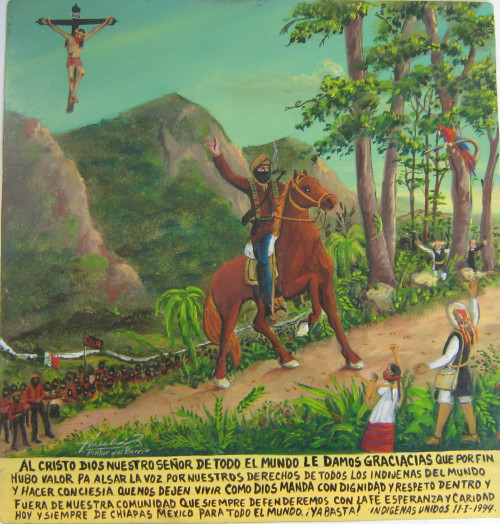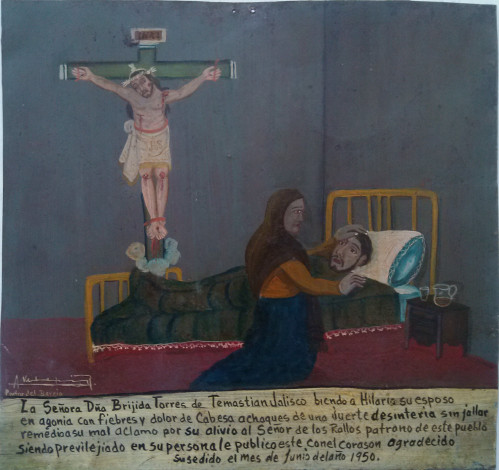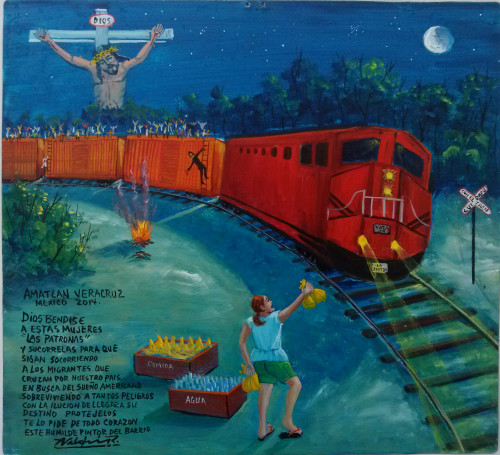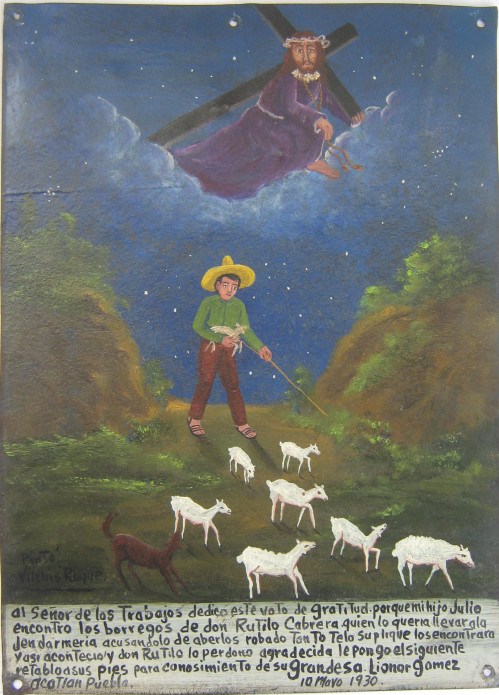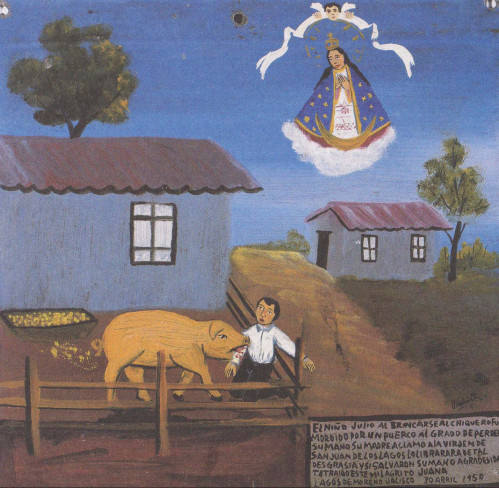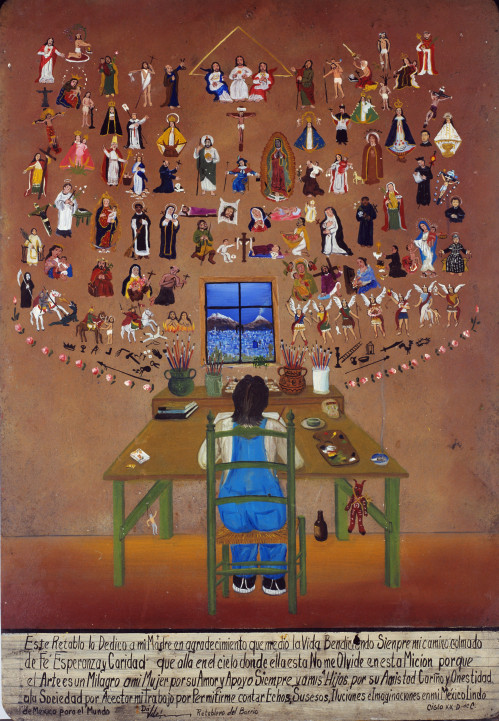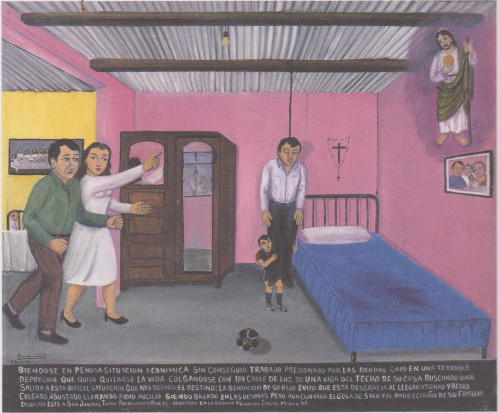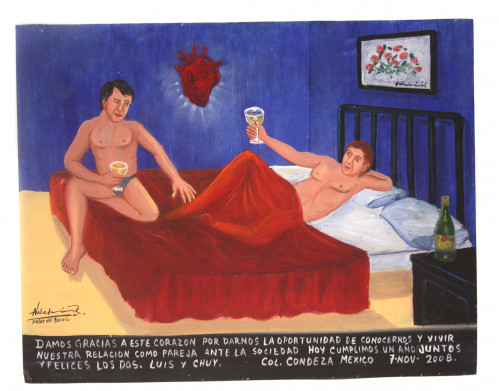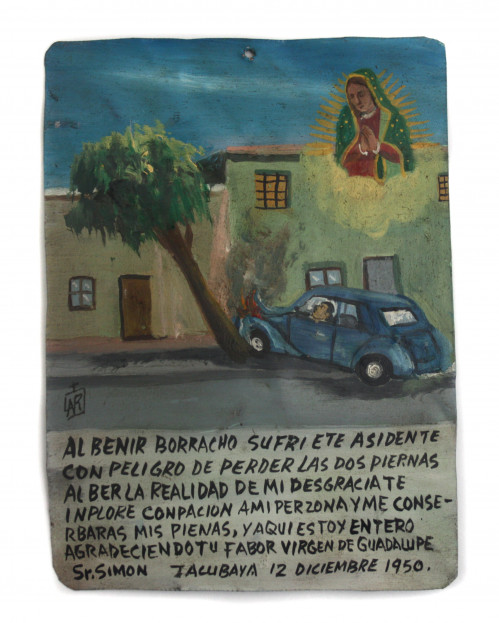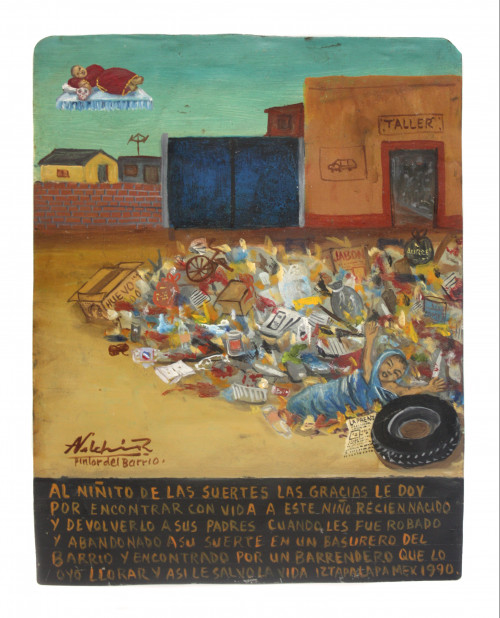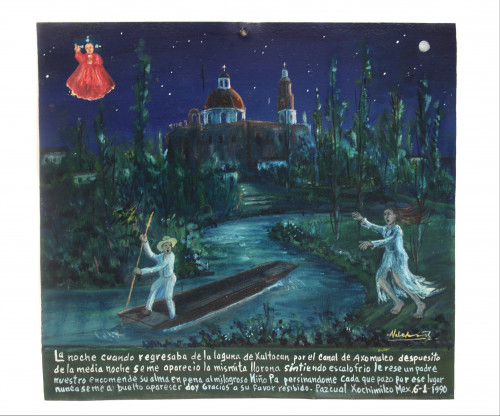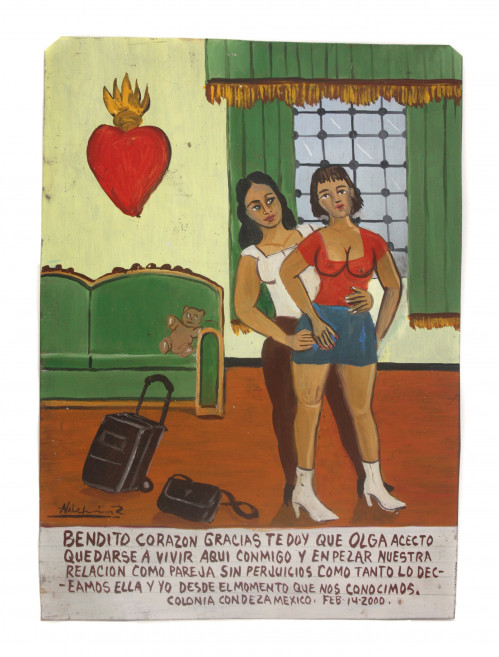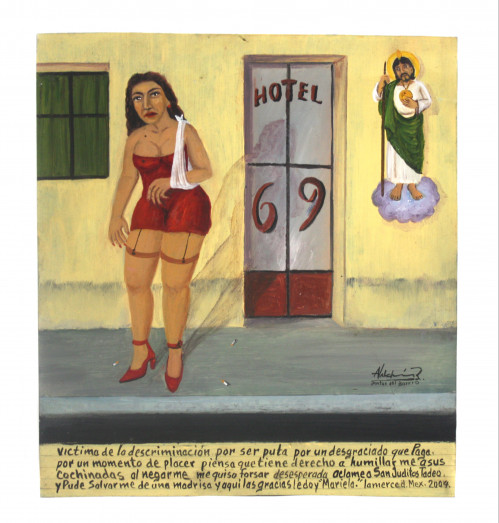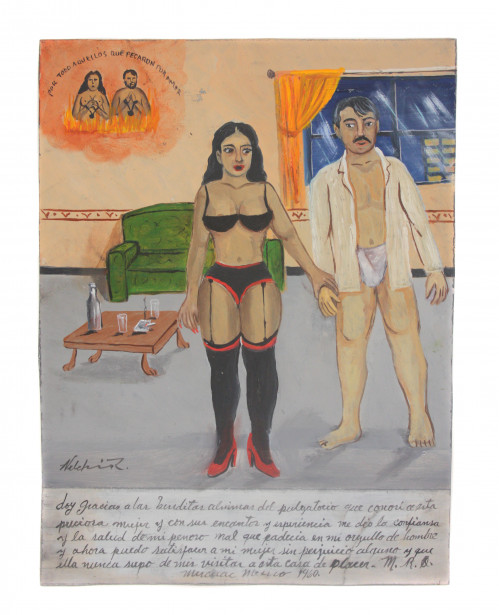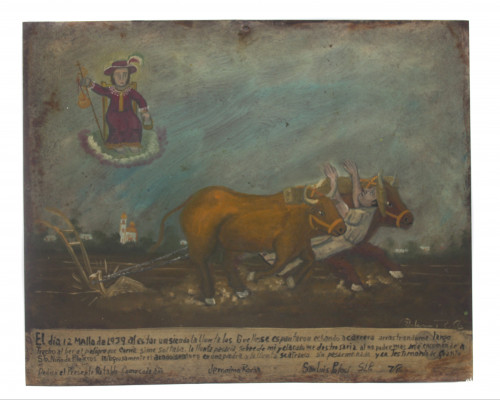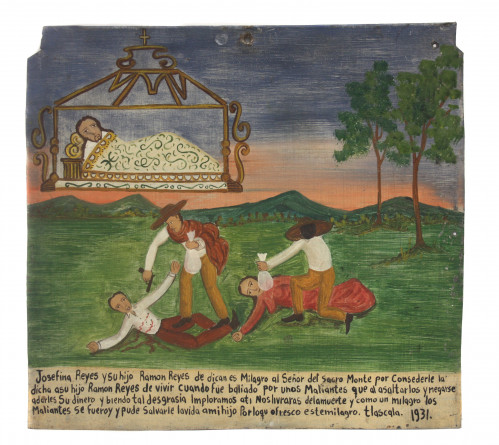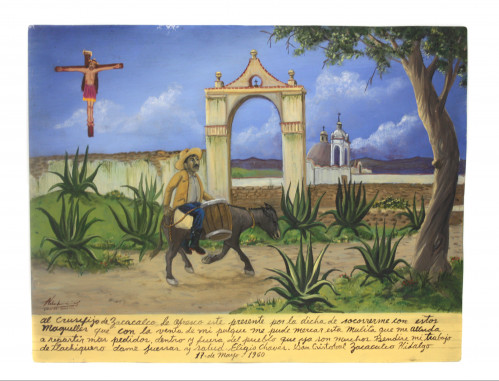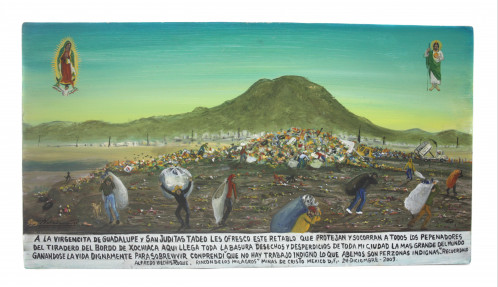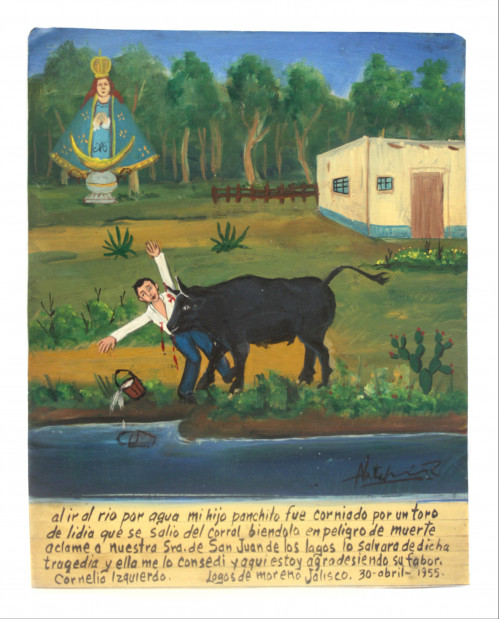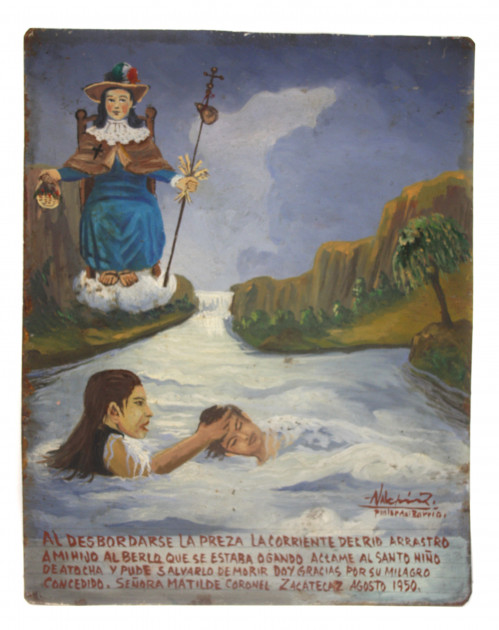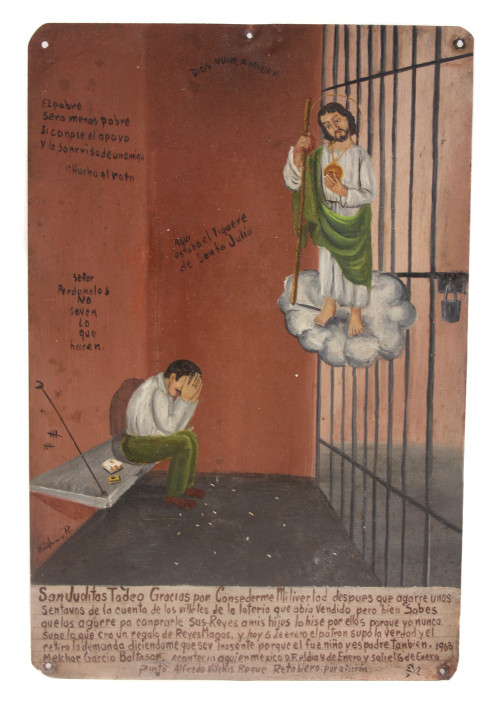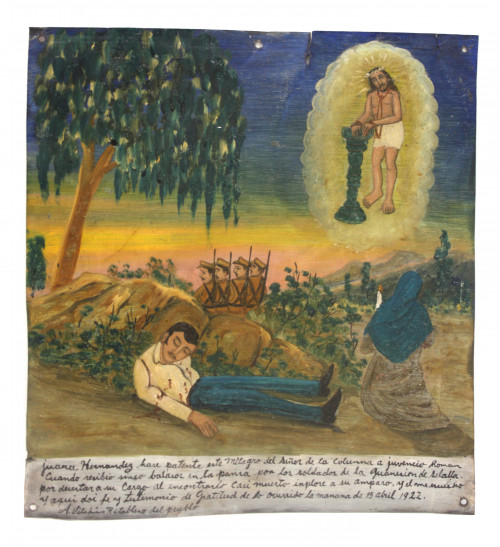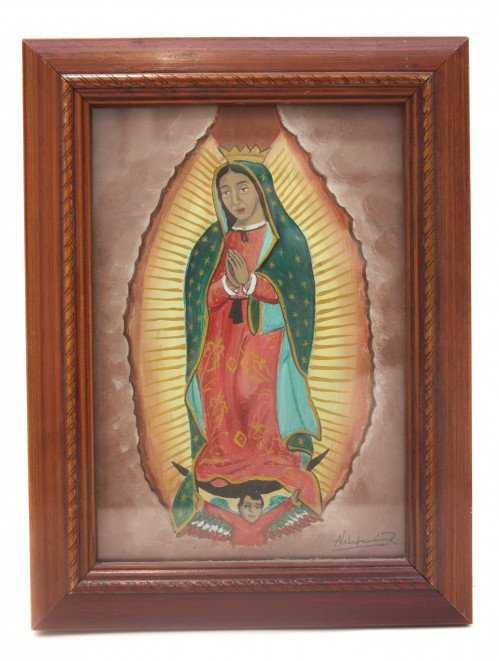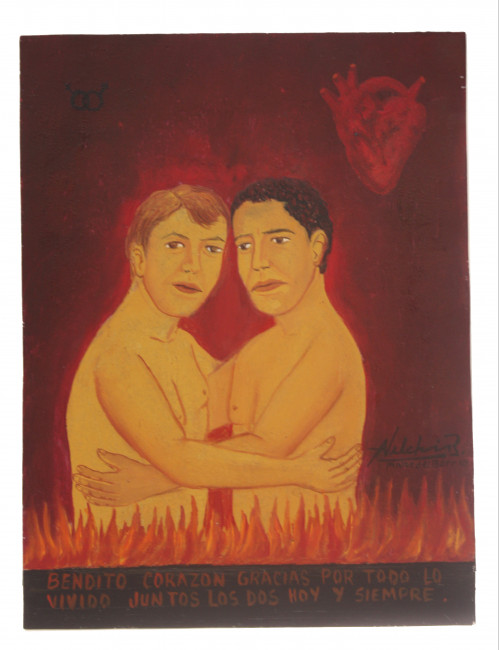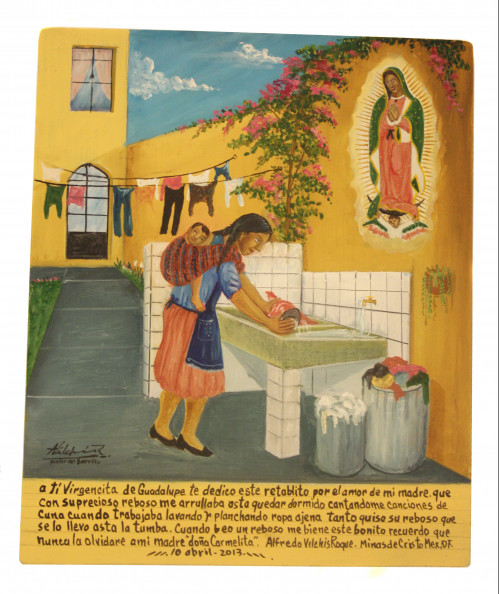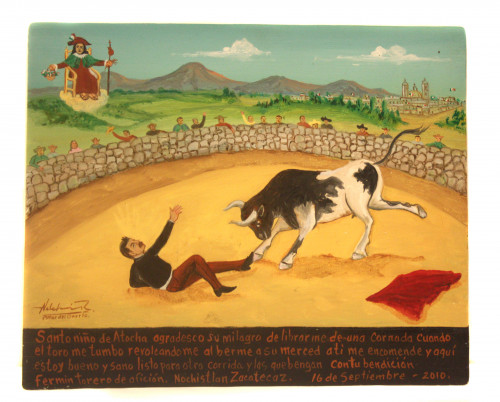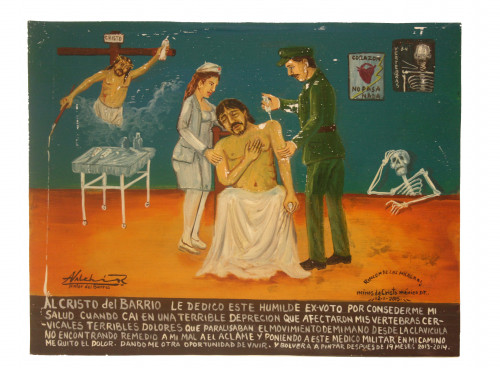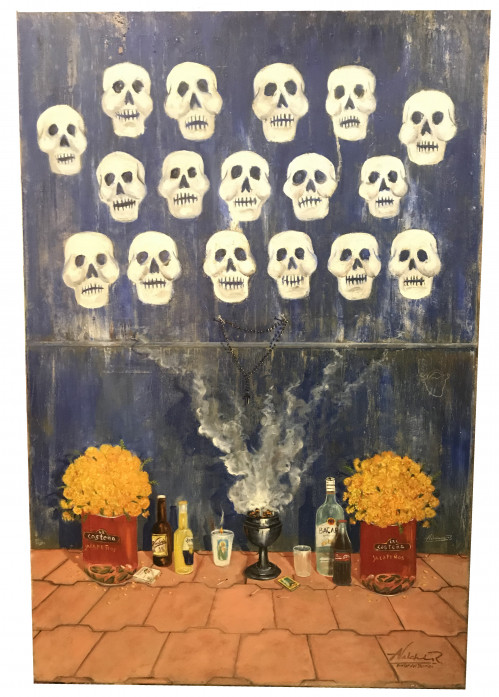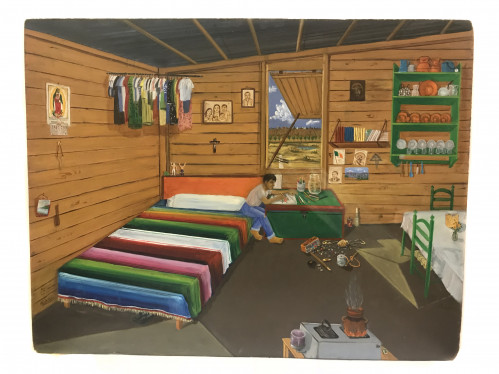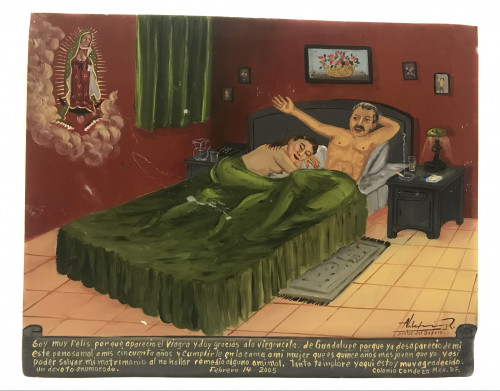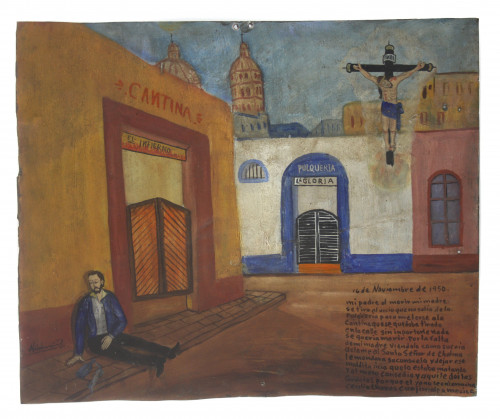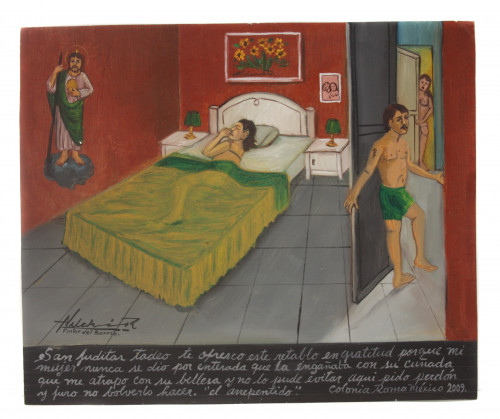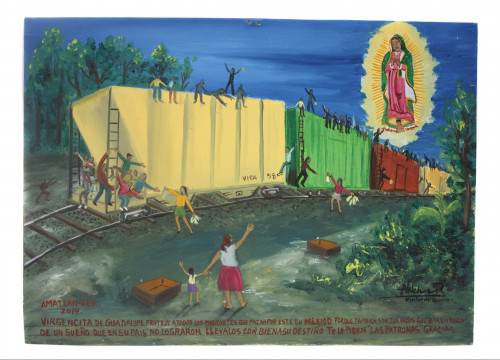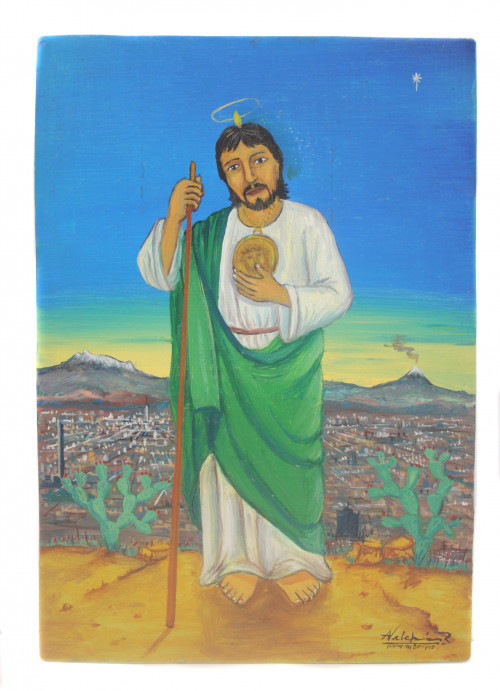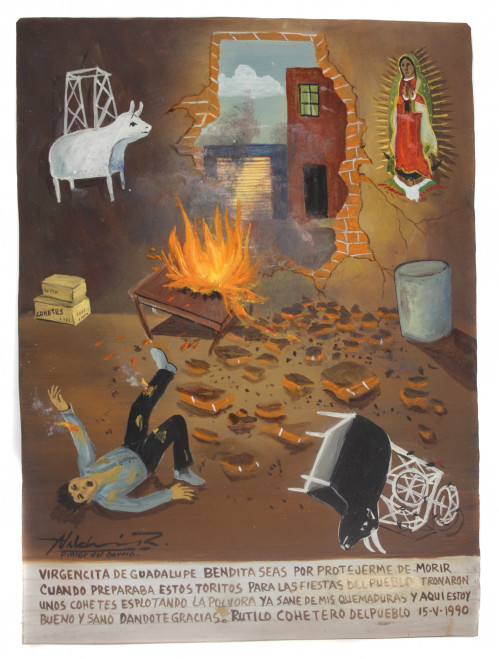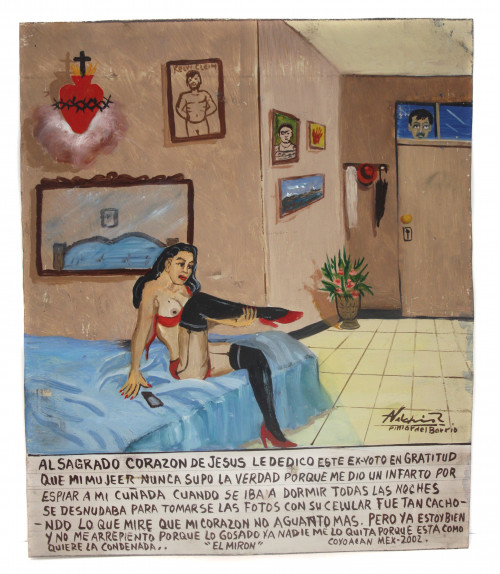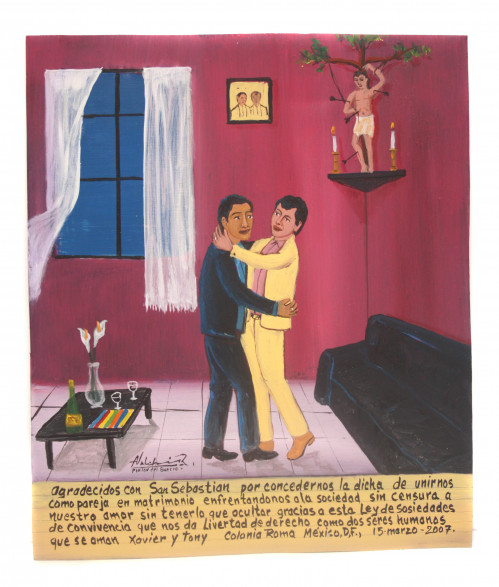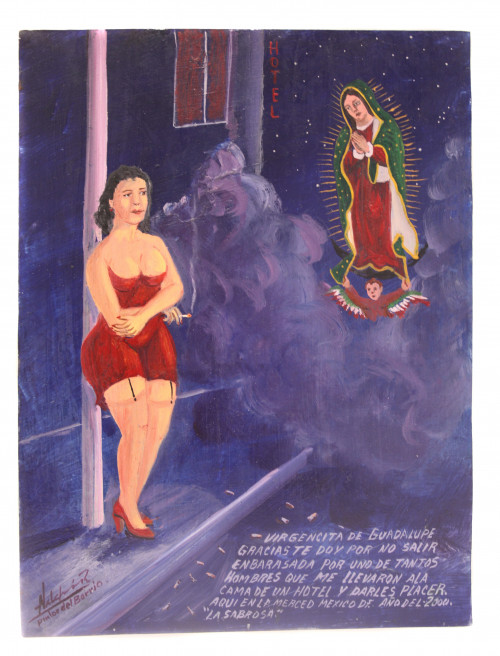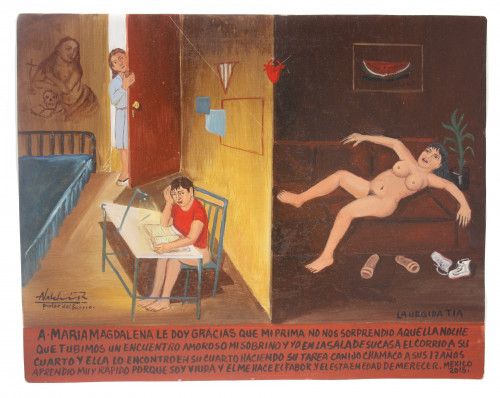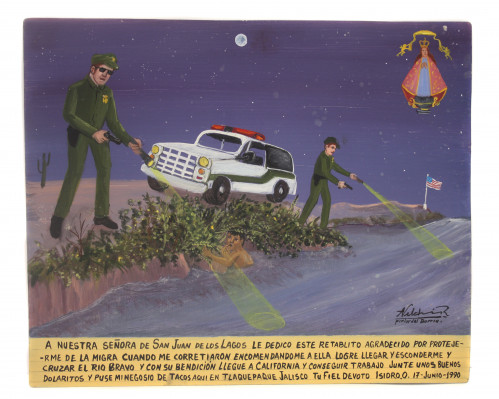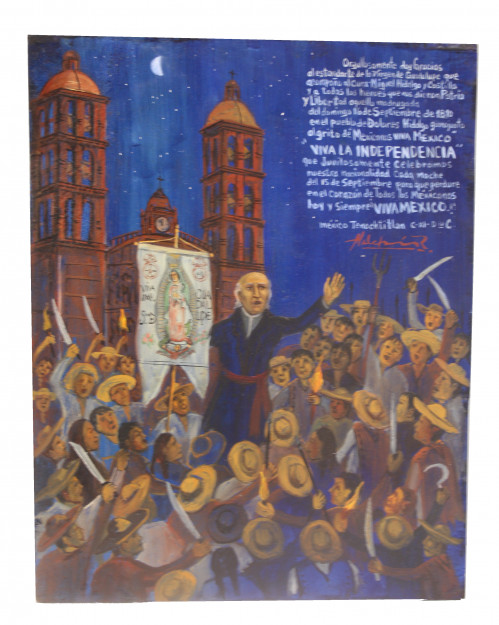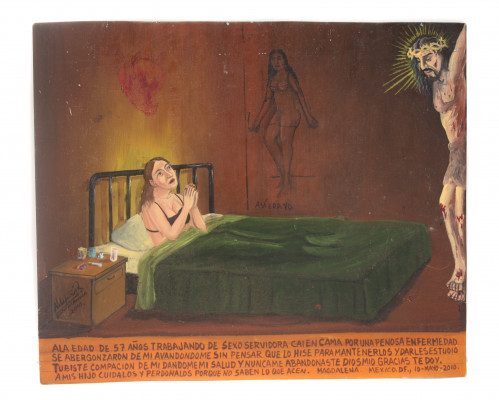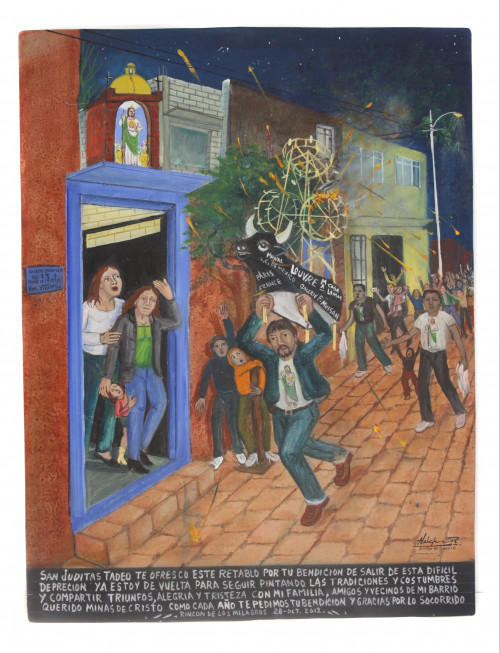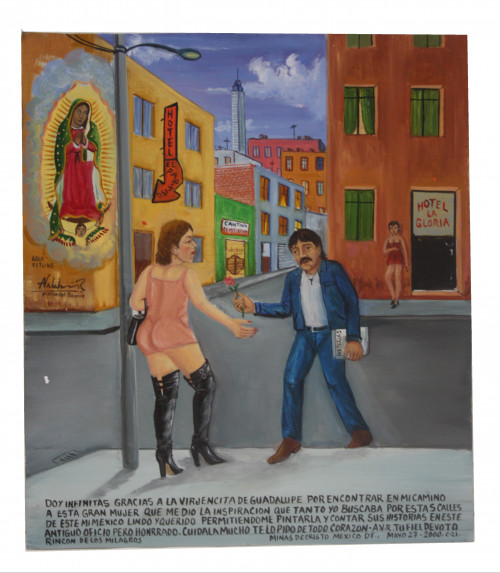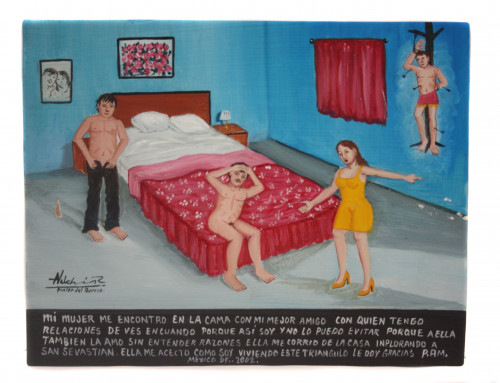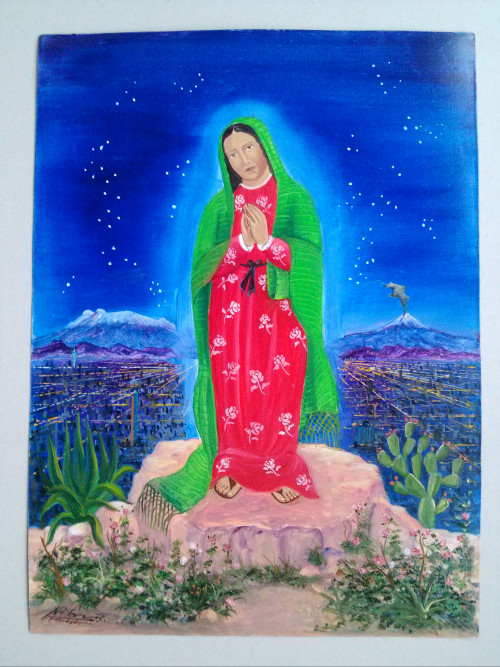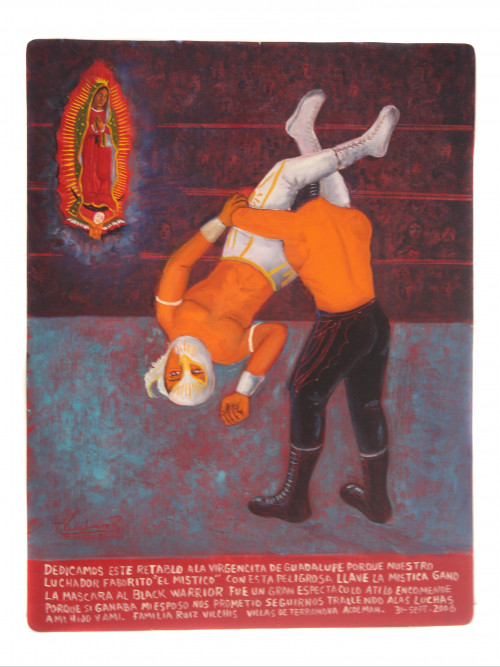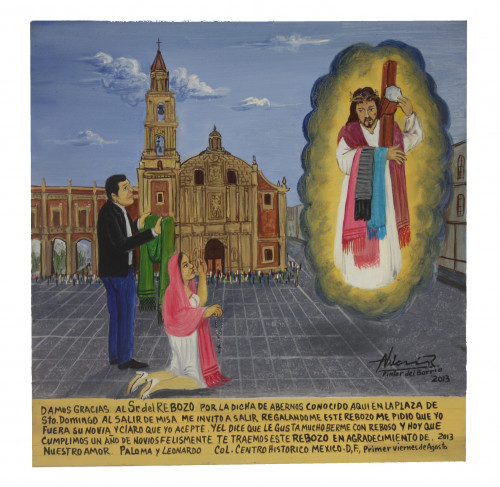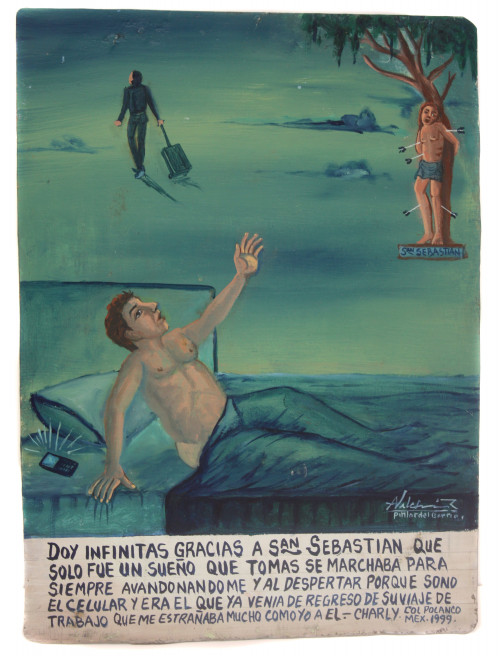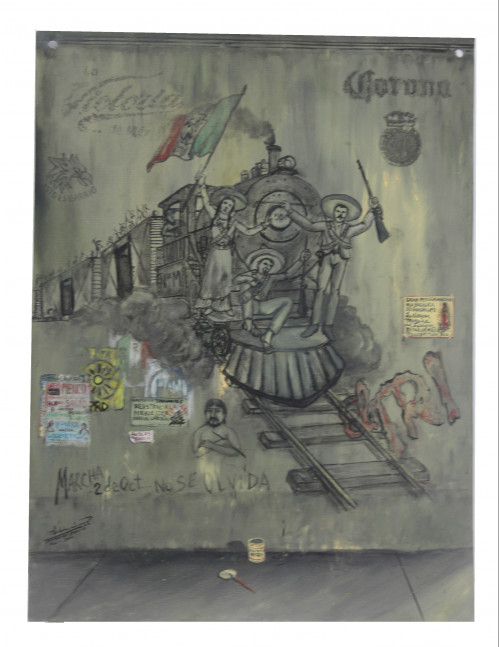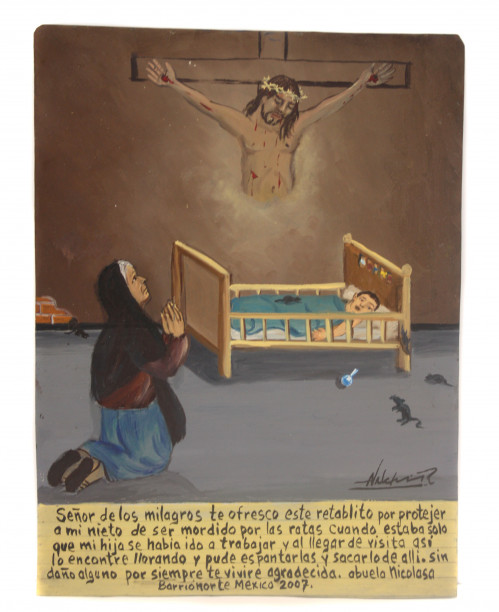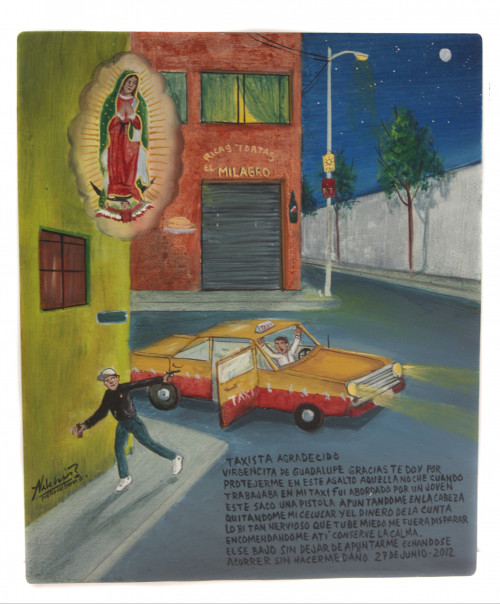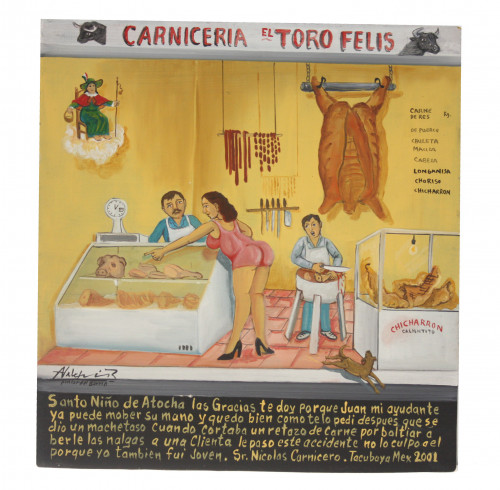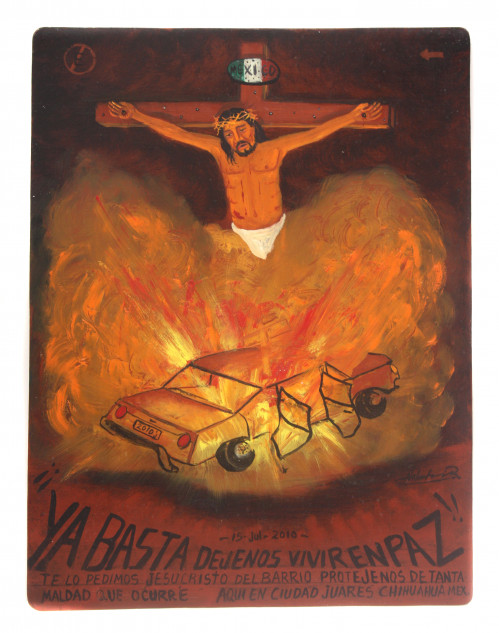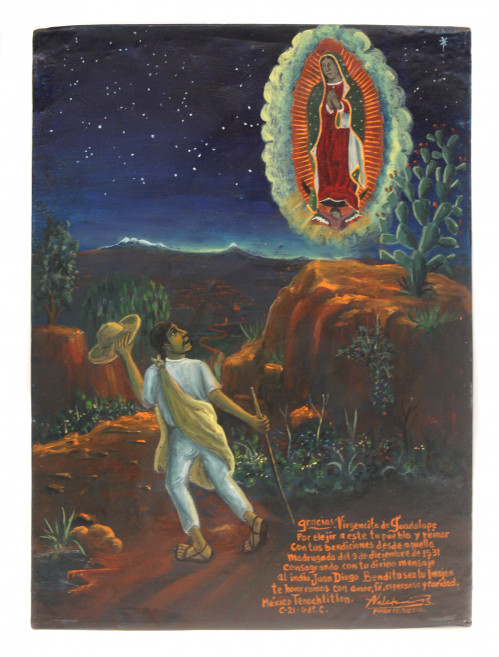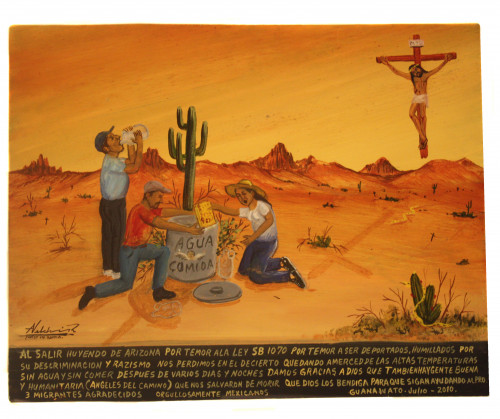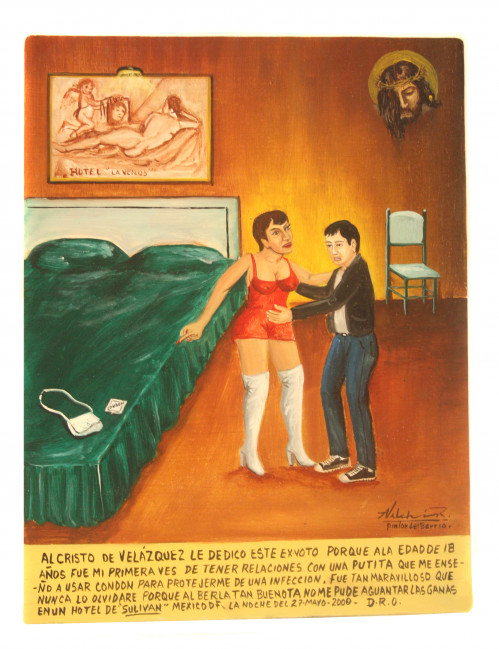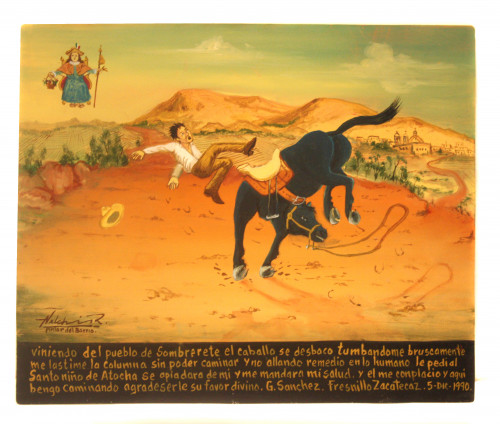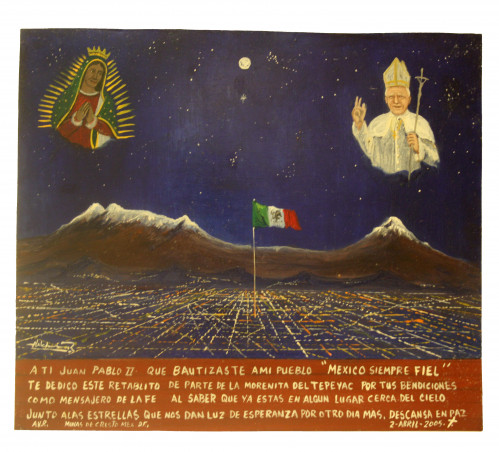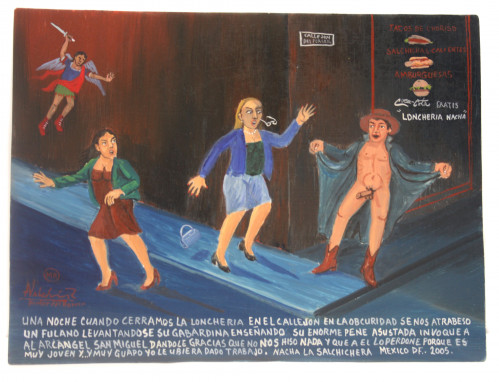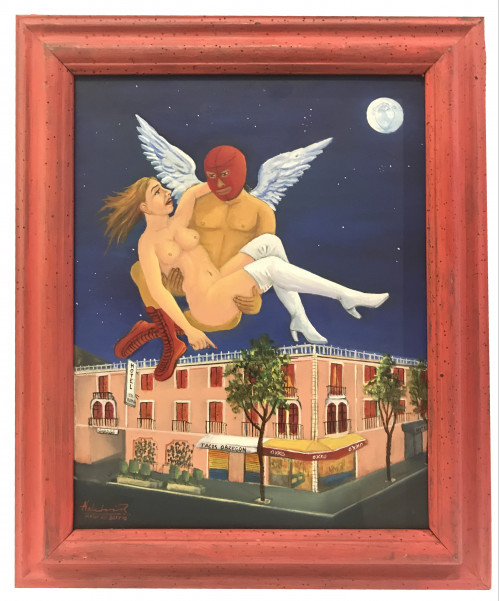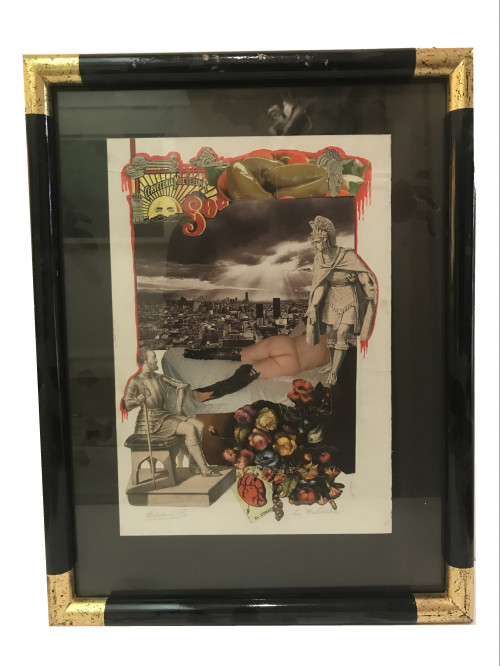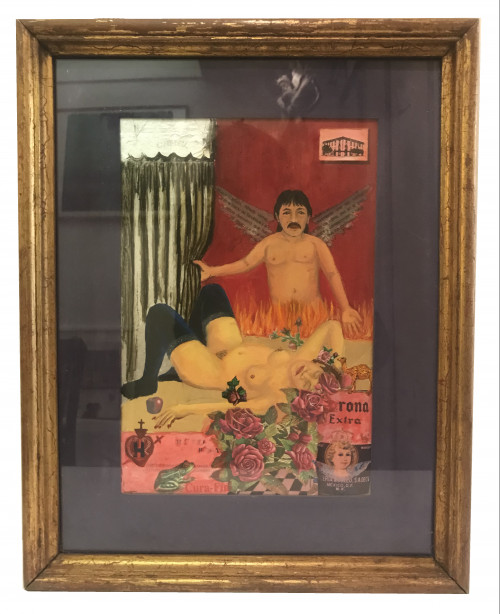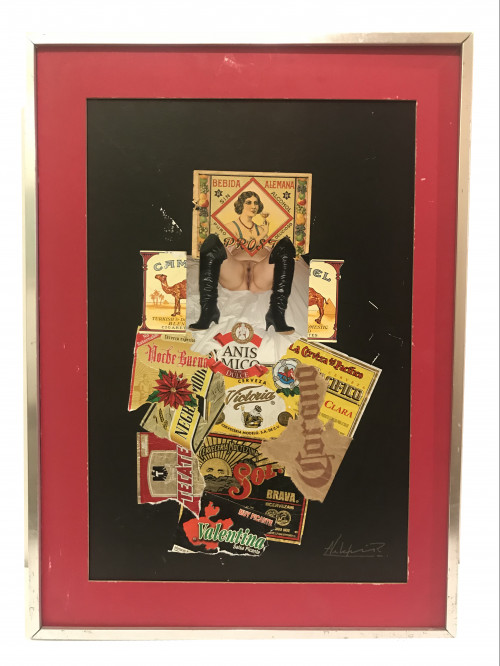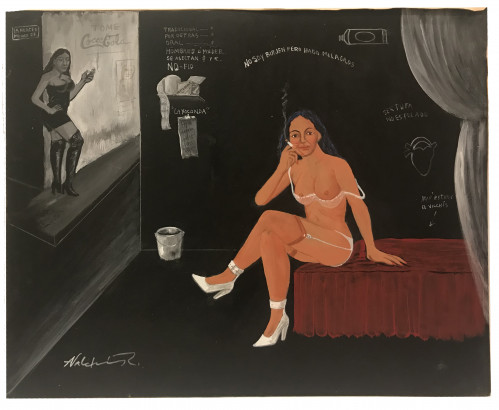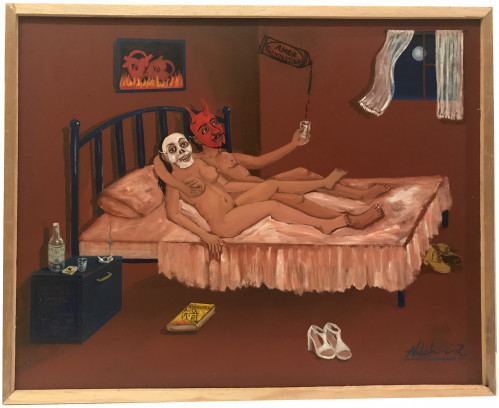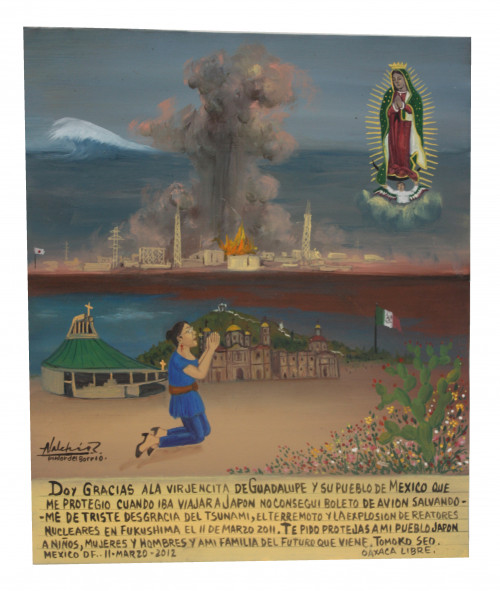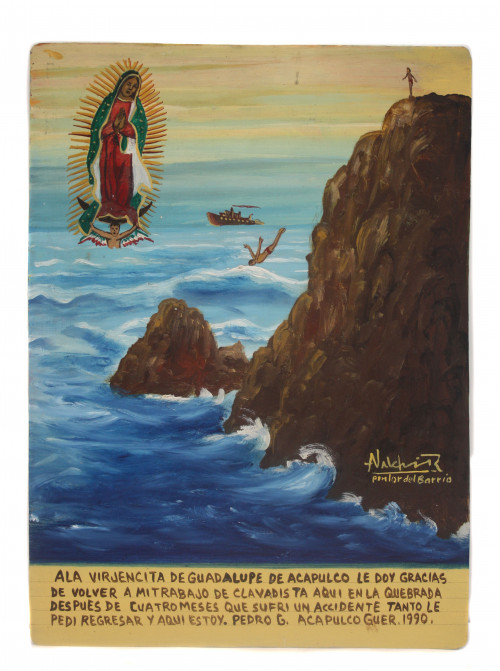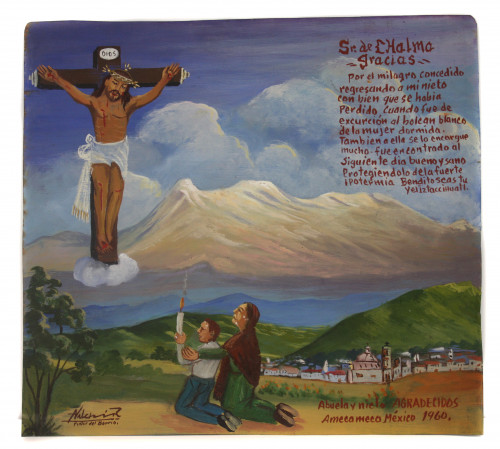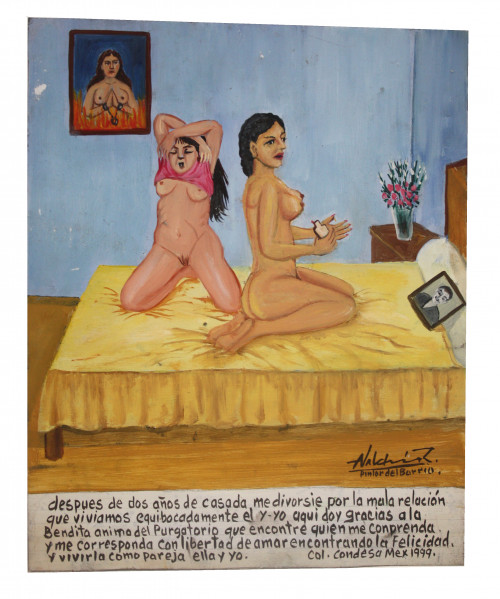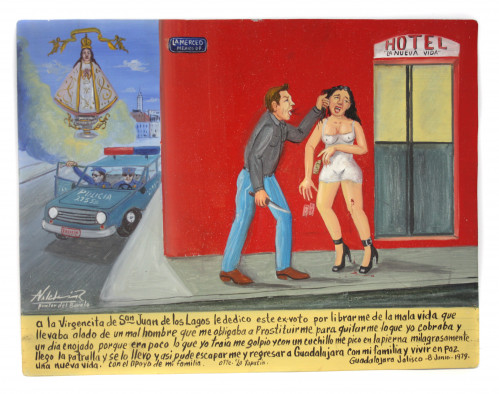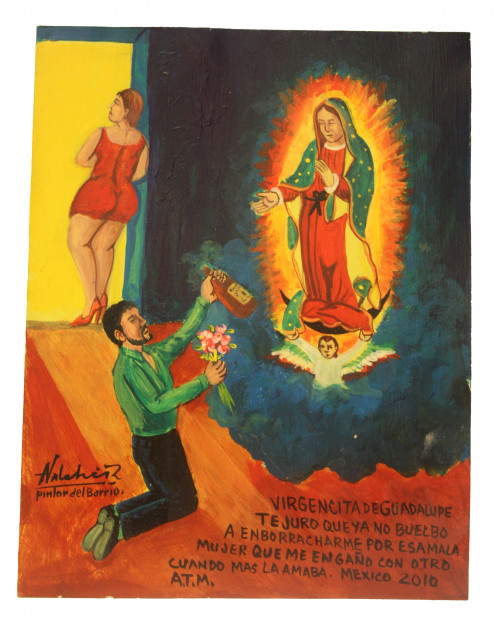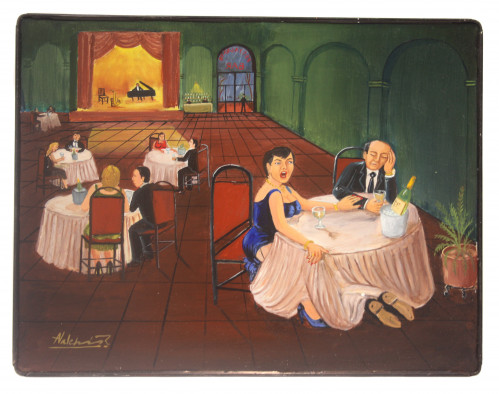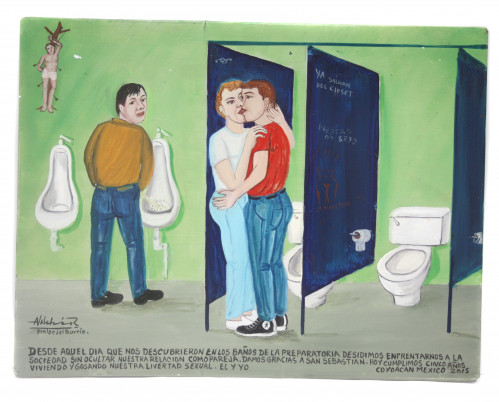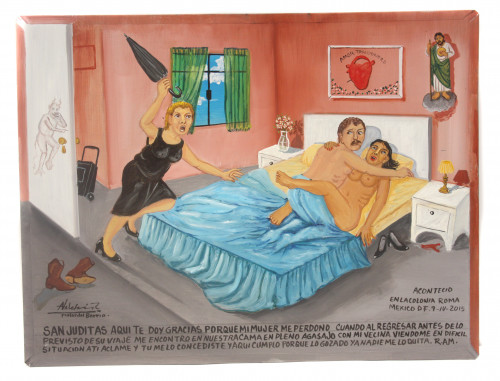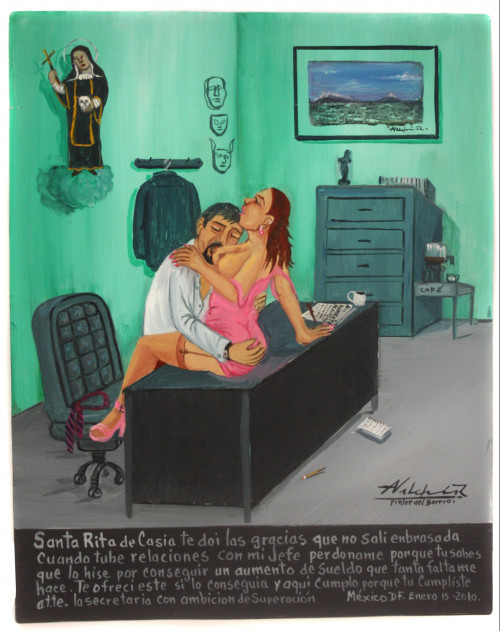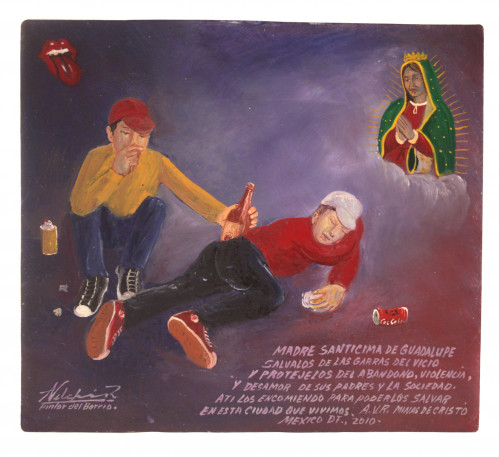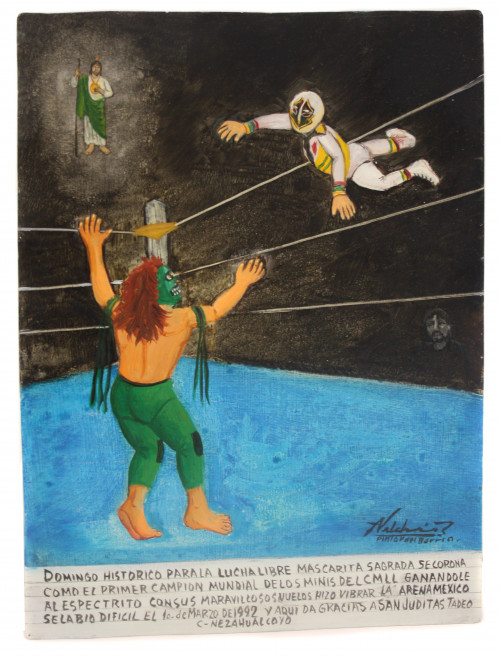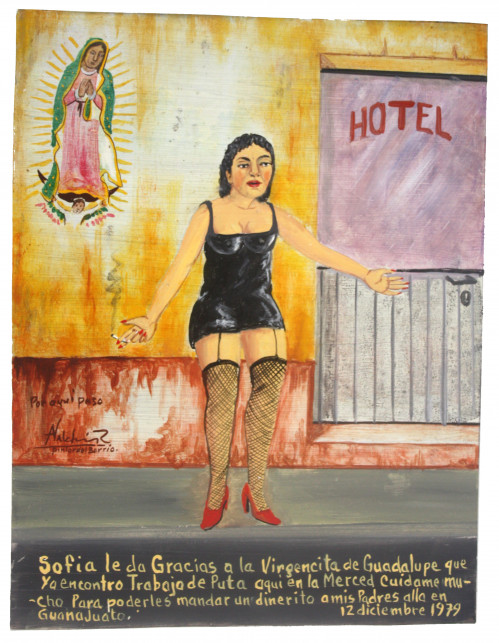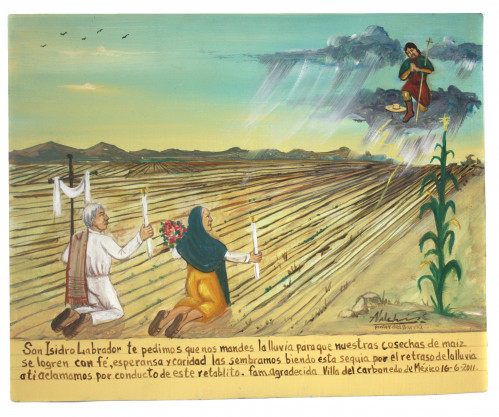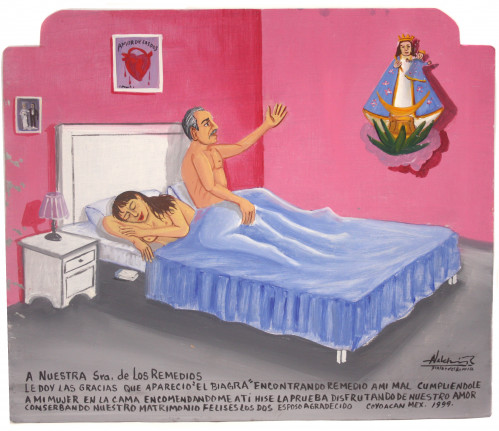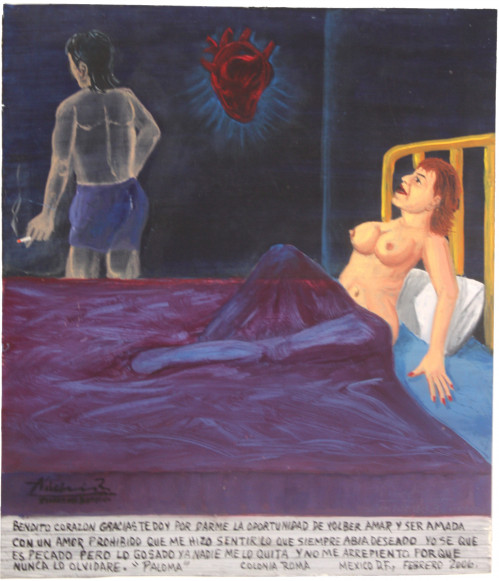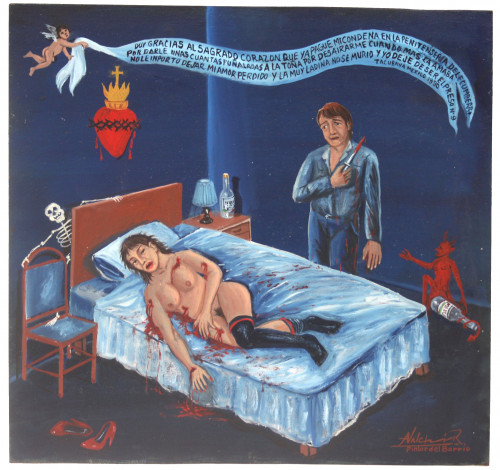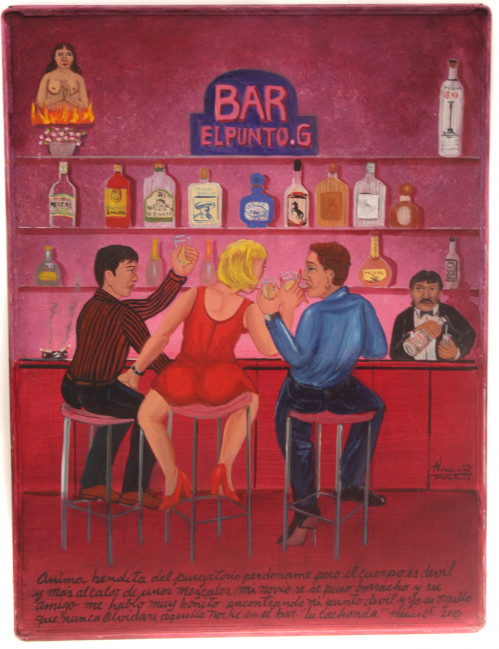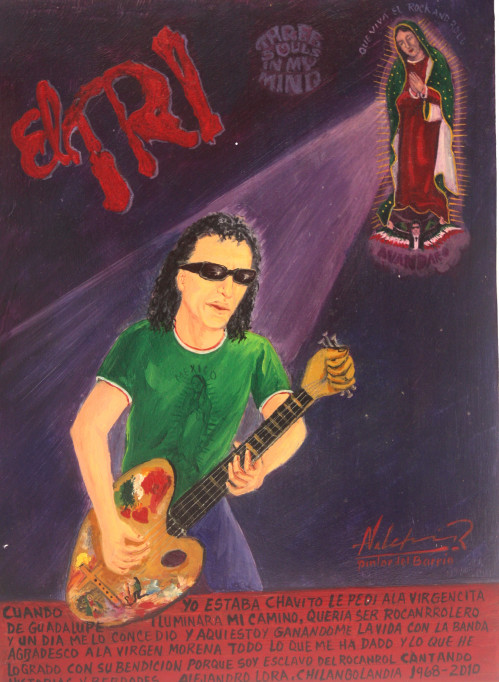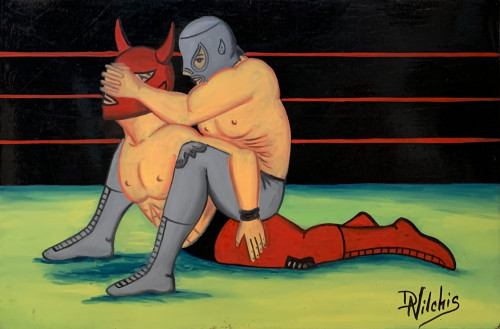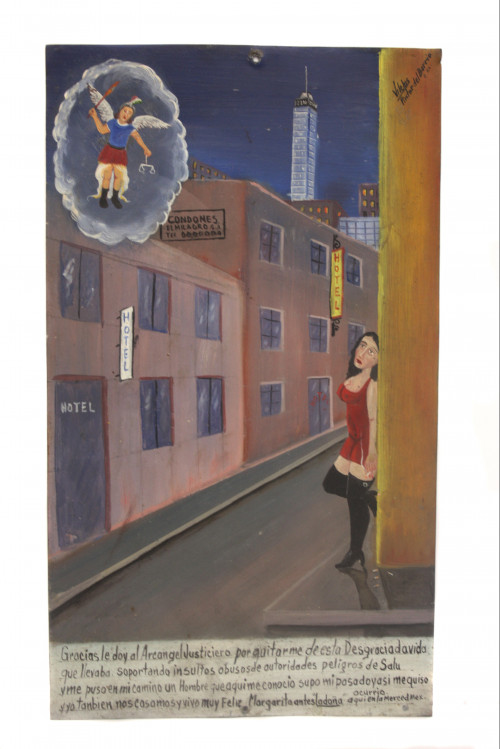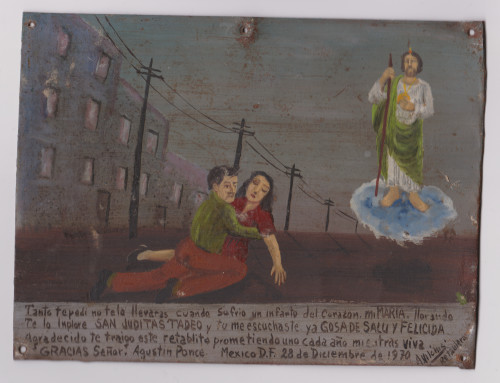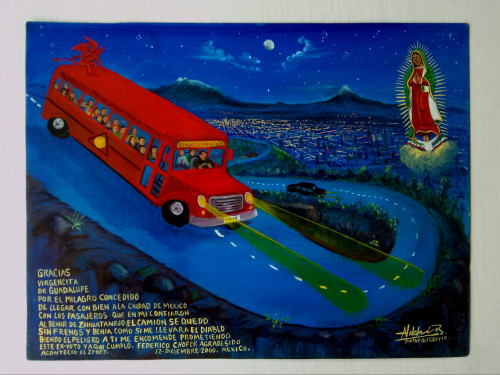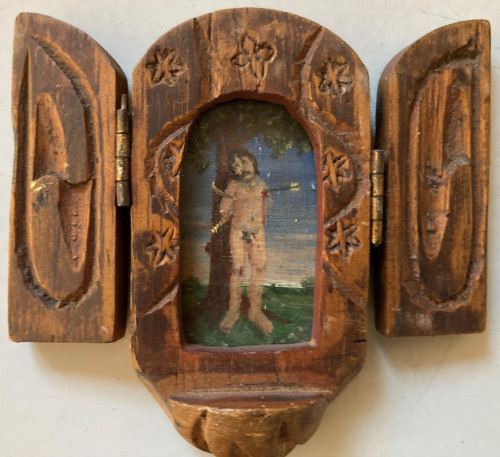Alfredo Vilchis-Roque
Alfredo Vilchis-Roque
Mexico
Born in 1959
Videos
In 2008, the galerie_frédéric moisan discovered Alfredo Vilchis’s votive offerings through the Maison des cultures du Monde, which has been carrying out extensive investigative work in favor of foreign cultures for 29 years. Therefore, in March 2009, a major exhibition was devoted to the work of Alfredo Vilchis at the gallery. Building on its success, the galerie_frédéric moisan presented a new exhibition of the painter of altarpieces at the end of 2011. The event brought together more than 130 ex-votos and was held jointly with the exhibition "Le musée-monde" at the Louvre.
Alfredo Vilchis is today the most talented representative of a very old tradition, that of the painters of ex-votos or painter of miracles (“milagros”) as we call these small paintings on metal deposited by the hundreds in Mexican churches. , collected by Frida Khalo and Diego Rivera.
These popular artists, often self-taught, commission works to thank virgins and saints for a miraculous rescue, an unexpected healing, a healed wound. Each small painting, composed of an image and a text, expresses the gratitude of the humans struck by tragedies and saved in extremis by the intervention of the Virgin of Guadalupe or of the innumerable patron saints. Formerly famine, war and disease, today drugs, prostitution, kidnappings, terrorism, all the big and small misfortunes of Mexicans are delicately and minutely listed.
Alfredo Vilchis is thus both a confidant for his sponsors but also a witness of his time when he fixes with unparalleled skill these little scenes where the divinity intervenes in everyday life. On the fringes of sacred art and on the fringes of contemporary art, the "retablero" embodies for me all the beauty and emotion of modest art. I met Alfredo Vilchis in 2000 at the Mexico City flea market where he still sold his works accompanied by his sons and I am very proud to have, with the photographer Pierre Schwartz, simply contributed to his international notoriety with the book "La rue des Miracles ”published in 2003 by Editions du Seuil.
Alfredo Vilchis was able to overcome the anonymity of the "retableros" (altarpiece painters) thanks to his ingenuity and his unusual personality. I remember his words: “It is a very beautiful job, but very painful. It must be done with respect, it is not only for the money, we are messengers of people's feelings ”.
His presentations at the Frédéric Moisan Gallery (in 2008, 2011, 2013) and at the Louvre (in 2011) by Jean-Marie Le Clézio (Nobel Prize for Literature 2008) are a welcome recognition for all the unknown painters who continue to forge this link. delicate between heaven and earth.
Herve Di Rosa
THE EX-VOTO
You were on the verge of disaster because of a jealous and abusive husband, alcohol and drug abuse, you were close to death after a collapsed scaffolding, a train crash, a bite snake or earthquake, all natural means were exhausted when you turned to divinity, who granted you health or love. The situation was really distressing and the relief all the greater, hence the intensity of the promise you then made to your benefactor to thank him with an ex-voto.
Alfredo Vilchis is at the same time a painter of miracles, a self-taught intercessor, a public writer of our misfortunes and our hopes, a chronicler of wonders, a commission worker of the faith and a contemporary artist using tradition, as can be seen. do some African painters. He will tell your little happy ending story, and in doing so he will tell the story of the neighborhood, the Federal District, Mexico and the world at the beginning of the 21st century.
More than half of the votive offerings of Alfredo Vilchis are dedicated to the Virgin of Guadalupe, the patroness of Mexico. Appeared four times on the hill of Tepeyac to the shepherd Juan Diego in 1531, the Virgin ordered the construction of a church in her glory on this place where previously there was a temple dedicated to the Aztec goddess Tonantzin.
While painting, Vilchis fixes the divine presence in his concrete intervention, he freezes the moment when the two universes, Heaven and Earth are unified, where the marvelous intrudes into everyday life. An intimacy is created between the divinity and the miraculous: in distress the latter calls him and the image looks at his case, opens his arms, descends from his cloud to perform the miracle. Sometimes, very rarely, the text mentions the artist and thanks him "for having painted as it was told to him".
artworks
painting
engraving
sculpture
videos
